What is a Cavus Foot?
Children with cavus feet have arches that are much higher than other children their age. Although a high-arched (or supinated) foot type in children is most commonly caused by a neuromuscular disorder, it can also be idiopathic or inherited. Cavus feet are much less common than flat feet, but can cause many problems.
Research studies on cavus feet estimate that 60 per cent of people with cavus feet will develop foot pain.
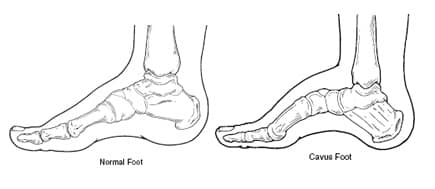
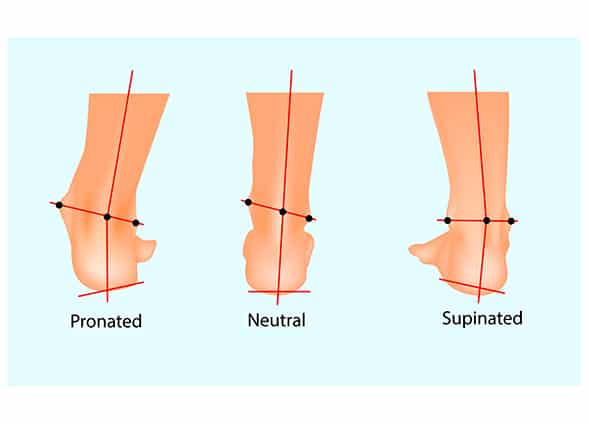
What causes a Cavus Foot?
Some children develop high-arched feet because they have an underlying neuromuscular disease. The most common neuromuscular disease that can cause cavus feet in children is Charcot-Marie-Tooth (CMT) disease.
The common causes of cavus feet include:
- Neuromuscular disease (eg. CMT, muscular dystrophy, spina bifida, polio, peripheral neuropathy)
- Idiopathic or inherited
- Congenital – eg clubfoot
What are the most common symptoms of a Cavus Foot?
What are the most common symptoms of a Cavus Foot?
- Pain under the ball of the feet (metatarsalgia)
- Hammer toes or clawed toes (toes curled up)
- Ankle sprains or ankle instability
- Sesamoiditis – pain and swelling under the big toe joint
- Heel pain or plantar fasciitis
- Achilles tendonitis or peroneal tendon injuries
- Haglunds deformity – a bony prominence at the back of the heel
- Painful calluses (hard skin) under the ball of the foot
- Poor balance
- Difficulties finding shoes to fit
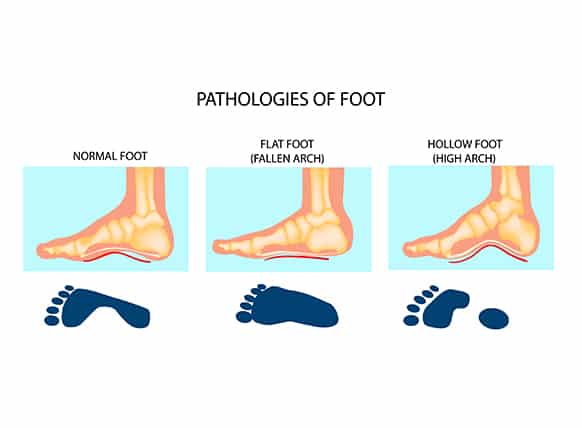
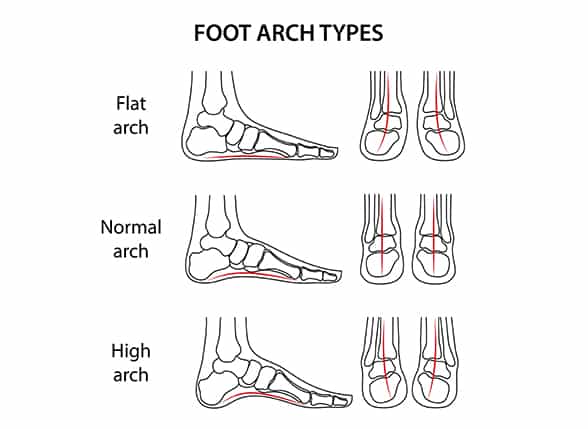
How is a Cavus Foot diagnosed?
Your podiatrist will take a comprehensive medical history and perform a physical examination including a gait analysis. The assessment will include:
- foot posture assessment
- neurological screening for reflexes, sensation, muscle tone and strength and balance
- joint flexibility (or range of motion)
- biomechanical assessment of the foot, ankle and leg
- footwear assessment – looking for abnormal shoe wear patterns.
How is Cavus Foot treated?
The high arch can significantly affect the function of the foot, making it less flexible and reducing its shock-absorbing capabilities. The aim of treatment is to support the foot, improving its balance, as well as load distribution, thereby relieving pain and preventing further progression of the condition.
The cavus foot is treated with a combination of the following:
- Custom orthotics – there is good research evidence to support the use of custom foot orthoses for cavus feet. Foot orthoses reduce foot pain, improve ankle instability and help to slow down progression of the cavus foot deformity over time.
- Footwear – children or adolescents with cavus feet need a deep, stable shoe with a good shock absorbing midsole.
- Strengthening exercises – strengthening of weak muscles in the feet or legs that help to straighten the toes.
- Stretching exercises – children with cavus feet tend to have a tight Achilles tendon and calf muscles. Stretching these muscles can help to improve the flexibility and function of the feet.
- Balance and proprioception exercises – can help to improve ankle instability, reducing the risk of ankle sprains.
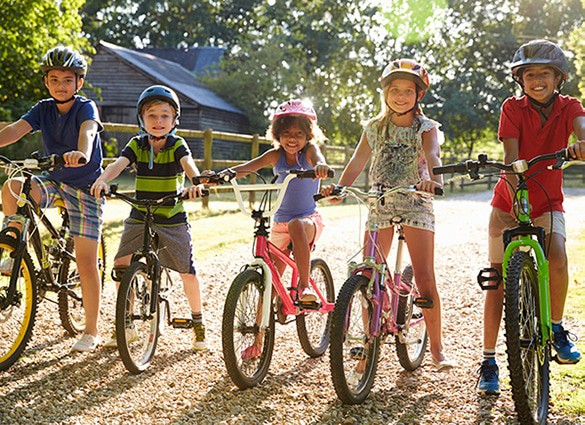

What should I do if my child has high arches?
If your child is experiencing foot pain, ankle instability or poor balance, or you are concerned about their gait or foot posture, contact us for a comprehensive paediatric assessment and professional advice by one our experienced podiatrists.

